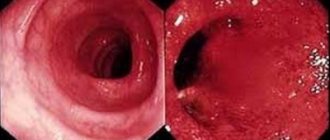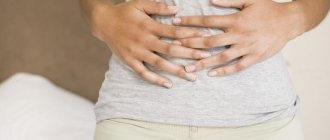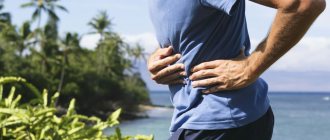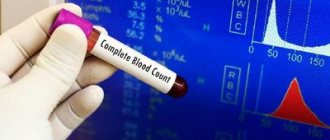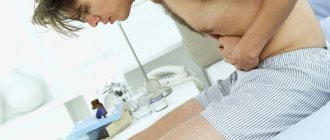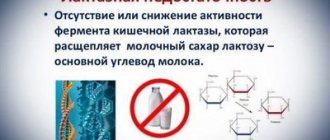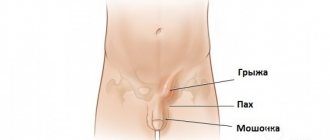Abdominal pain is a common symptom that is familiar to every person. It can be distributed or local in nature, localized in any area, from the ribs to the groin.
You may experience nagging pain, spasms, colic; the pain can be continuous, paroxysmal, short-term (acute pain), or last several weeks, months and even years (chronic pain).
Abdominal pain accompanied by other symptoms (eg, vomiting, diarrhea, fever), pain that steadily progresses over time may signal the development of a serious illness.
Causes of abdominal pain
The most common causes of abdominal pain include: flatulence, constipation, indigestion, food poisoning.
Acute abdominal pain can be caused by something minor that requires no treatment, or it can be a serious emergency. In this case, it may be accompanied by other symptoms that can develop over several hours or days.
Causes of acute abdominal pain include:
- gastroenteritis (caused by a viral infection);
- diverticulitis;
- duodenitis;
- colon perforation;
- intussusception (in children);
- intestinal obstruction;
- acute mesenteric ischemia;
- sclerosing mesenteritis;
- abdominal aortic aneurysm;
- peritonitis;
- appendicitis;
- spleen infection, splenic rupture;
- cystitis;
- cholangitis;
- cholecystitis;
- pancreatitis;
- urinary tract infection;
- pyelonephritis;
- stones in the kidneys;
- diabetic ketoacidosis;
- liver abscess;
- salpingitis;
- ectopic pregnancy;
- abdominal injuries;
- acute cardiovascular condition;
- pericarditis;
- pneumonia;
- pulmonary embolism.
A diagnostic search for the cause of chronic abdominal pain sometimes requires the involvement of a multidisciplinary team of specialists, since its manifestation may be associated with diseases of various organs.
Causes of chronic abdominal pain include:
- gastroesophageal reflux disease (GERD);
- functional dyspepsia;
- gastritis;
- peptic ulcer of the stomach and duodenum;
- ulcerative colitis;
- irritable bowel syndrome (IBS);
- celiac disease;
- hiatal hernia;
- inguinal hernia;
- endometriosis;
- ovarian cysts;
- inflammatory diseases of the pelvic organs;
- gallstones;
- angina pectoris;
- sickle cell anemia.
Causes of pain and bloating in the intestines
The described problems can appear even with a normal change in climate or time zone. Gastrointestinal dysfunctions are common when eating habits change. Abdominal bloating, accompanied by pain, can occur for reasons that are divided by origin into two groups:
- Food.
- Consequences of diseases.
If bloating is a consequence of a reaction to any product, its partial or complete exclusion from the daily portion will relieve discomfort in the stomach. In this case, no special treatment is required. The intestines are capable of reacting negatively to foods containing coarse biological, indigestible elements (fiber), foods that trigger the process of decay (flour), gluten-containing foods, milk and its derivatives. Excessive consumption of sweets and carbonated liquids also adversely affects the operation of the LCD system.
Food culture also affects the tendency to bloating. Quick snacks on the run, a love of fatty and spicy gastronomic delights, the caloric content of which exceeds the norm several times, evening and night overeating over time lead to the development of chronic bloating. Those who like to actively communicate while eating food are also at risk. Air is swallowed when talking, smoking, the presence of dental devices in the mouth (dentures, braces), and inflammatory throat diseases.
To reduce the risk of flatulence, it is recommended to follow several rules:
- do not eat a large number of different fruits at one time; it is better to replace dessert with them after the main course;
- fiber softens well during stewing or baking;
- It is better to soak legumes before cooking.
The second group of causes of flatulence refers to existing diseases that affect not only the gastrointestinal tract, but also the genitourinary system and glandular organs. The most dangerous pathology is the oncological process occurring in the colorectal system or in the corpus luteum of the ovary in women. Pain and swelling occur due to stagnation of bile, reduced production of certain types of enzymes or acids. Mechanical obstacles in the gastrointestinal tract (adhesions, kinks, narrowing, tumors) also lead to flatulence abnormalities. Inflammatory processes in the mucous membrane or blockage of vascular channels prevents the normal absorption of gases from the gastrointestinal tract.
Causes of pathology that do not belong to these groups are listed separately. Hormonal imbalances can contribute to the development of temporary bloating, for example, during the premenstrual period in women. The period of gestation in pregnant women also affects the functioning of all systems. Mechanical compression of the intestine occurs, which complicates its peristalsis. If you fall asleep in an awkward position, the canal loops may be compressed. After waking up and starting to be active, the flatulence disappears.
When should you see a doctor for abdominal pain?
Consult your doctor in the following cases:
- the pain gains intensity and intensifies quickly;
- abdominal pain that is prolonged or recurring;
- stomach pain and difficulty swallowing;
- loss of appetite;
- weight loss for no reason;
- constant nausea and vomiting;
- abdominal pain radiating to the chest, shoulder, arm;
- pain and feeling of heaviness in the right hypochondrium;
- yellowing of the skin;
- difficulty urinating, painful urination;
- too rare or too frequent urge to urinate;
- severe pain during menstruation;
- unusual vaginal discharge, bleeding;
- prolonged (several days) diarrhea;
- prolonged constipation;
- blood in vomit or stool;
- fever;
- increased sweating (cold, sticky sweat).
How exactly does your stomach hurt?
Stomach pain can happen in different ways, and the nature of the pain can tell a lot about the cause. She may be:
- Sharp, stabbing – it occurs abruptly and is immediately quite strong.
- Chronic – bothers you for some time, may go away and recur after a while.
- Aching – may resemble a feeling of hunger or heaviness.
- Cutting, burning - acute attack.
- Tonic – with tension and uncontrolled muscle contractions, spasms.
Pain may be the only symptom or accompanied by others: nausea, flatulence, stool disorders, frequent urination, vaginal discharge, fever. Such symptoms complement the picture of the disease and allow you to more accurately determine the problem.
Based on where it hurts, you can at least roughly understand which organ to examine. So:
- Pain in the upper abdomen most likely indicates gastrointestinal diseases. Less often – about developing myocardial infarction.
- Pain in the left side of the abdomen mainly indicates problems with the pancreas or spleen.
- Pain in the right side of the abdomen - attention to the liver and gall bladder.
- Pain below – pathologies of the genitourinary system and intestines.
Which doctors should I contact for abdominal pain?
If your stomach hurts, first of all, you need to consult a therapist (or a pediatrician if a symptom occurs in a child).
After collecting an anamnesis and physical examination, the doctor will give recommendations and, if necessary, prescribe treatment or refer you to another specialist: gastroenterologist, hepatologist, gynecologist, urologist, nephrologist, surgeon.
Consult your doctor immediately if your abdominal pain is intense and gets worse when you try to move or find a comfortable position; the pain is very severe and occurred suddenly; you feel pain in your abdomen when touched; there is an admixture of blood in the vomit, urine or stool; black stool with an extremely unpleasant odor; abdominal pain accompanied by fever or difficulty breathing and chest pain; the pain arose several days after the abdominal injury.
Author:
Amelicheva Alena Aleksandrovna medical editor
Intestinal colic - symptoms and treatment
There is no classification of intestinal colic. Depending on the cause of their occurrence, this condition can be divided into two categories:
- physiological colic;
- symptomatic colic.
Intestinal colic, which belongs to the second category, can occur against the background of various diseases, and the manifestation of colic can vary significantly.
With secondary lactase deficiency - the inability to break down milk sugar (lactose) - the child from the first weeks or months of life will be bothered by colic, foamy loose stools with a characteristic sour odor, regurgitation, flatulence, diarrhea or constipation, insufficient weight gain, irritability, excitability, sleep disturbance . These clinical manifestations stop by the 6-8th month of life, and the increased level of carbohydrates in the feces, characteristic of this disease, normalizes[2].
With helminthiasis and parasitosis , which often develop in children 2-5 years old, intestinal colic occurs repeatedly and almost always recurs[3][11].
In infectious diseases (acute respiratory infections and others), inflammation occurs in the muscular wall of the hollow organs of the gastrointestinal tract, which leads to its spasm and colic. As a result of severe intoxication, especially with the flu, abdominal pain is of a neuro-reflex origin.
Intestinal colic in school-age children is much less common. The causes of their occurrence at this age are primarily nutritional factors (related to eating behavior). The most common is the entry into the small intestine of a large amount of difficult-to-digest food. The diet of a child in adolescence changes dramatically; he often begins to eat dishes for adults: shish kebab, manti, lamb pilaf, fried chicken wings, etc. Such food has a bad effect on the state of the digestive system of the child’s body. Therefore, the clinical picture of colic will have its own characteristics: children also take a forced position, but at the same time they do not necessarily lie on their side with their legs tucked to their stomach, but can sit at the table, tilting their body towards it and resting their head on it. Older children usually do not scream or cry - they moan and grunt. It is difficult for them to lie on their back and straighten their legs due to intestinal spasms. When examining the abdominal organs, bloating, pain in the navel, along the intestine, in the epigastric region, right hypochondrium and at Kerr's point (in the gall bladder) are observed. The pain syndrome is often accompanied by nausea and heartburn.
Stale, fermented and too cold food, even in small quantities, can also cause spasms of the small intestine: for example, ice cream, cold carbonated drinks, unheated food from the refrigerator, etc.
The widespread unhealthy love of fast food among schoolchildren also causes cramping pain in the abdomen. With such errors in nutrition, along with pain, vomiting, belching, bitterness in the mouth, and a strong urge to defecate may occur. Temperatures up to 38.0°C are sometimes understood as a manifestation of the body’s vegetative reaction.
However, sudden cramping abdominal pain and increased gas formation can also occur when eating healthy food from your own garden. The child’s abdomen suddenly increases sharply, and sometimes it becomes difficult to breathe due to pressure on the diaphragm. Visiting the toilet is often unsuccessful. Children are often frightened by this condition. Here, peas, beans or beans, which contain a special carbohydrate that provokes flatulence, i.e. bloating, played a cruel joke on them. Excessive intake of legumes almost always leads to intestinal colic. Similar products also include cabbage, cauliflower and broccoli.
With neurogenic disorders in adolescence, dyskinetic intestinal disorders may occur. This is especially true for children with emotional and autonomic instability. Thus, with neurosis and vegetative-vascular dystonia in adolescents, sudden colic may occur, accompanied by other pronounced negative vegetative manifestations: sweating or chills, a feeling of fear, palpitations, pallor or redness of the skin, diarrhea. As a rule, this happens before any important event - an exam, or a public speech.
After intestinal infections, colic can occur in children of all age categories. In this case, the pain syndrome leads to mesadenitis - enlargement of the lymph nodes of the intestinal mesentery. Intoxication of the body caused by microbes aggravates the child’s condition, and in acute intestinal diseases, along with the typical symptoms of colic, a number of other serious symptoms are present:
- hyperthermia;
- intoxication;
- dyspeptic syndrome - nausea, vomiting, frequent loose stools mixed with mucus, blood or greens;
- liver enlargement and others.
With intestinal dysbiosis caused by infection or taking medications, abdominal pain without significant bloating is observed. The general condition practically does not suffer, the temperature remains normal. The attack of pain recurs periodically and can stop on its own or after symptomatic therapy.
In case of food poisoning (consumption of low-quality or expired products), various pathogens lead to intestinal colic. Thus, in young children, toxic infection can develop when feeding them expressed breast milk or formula that was improperly stored. In this case, intestinal colic will occur against the background of a severe or moderate condition with symptoms of intoxication, disruption of the activity of other organs and systems, and dyspeptic syndrome (nausea, heaviness in the abdomen, etc.).
In case of an acute abdomen, in addition to intense pain, there is an increase in body temperature, deterioration in health, vomiting, and upset stool. Sometimes, with such a serious pathology, the pain syndrome can be mild in young children, with malnutrition and against the background of any serious illnesses (blood diseases or cancer pathologies).
When examining the abdomen, tension in the abdominal wall muscles and impaired intestinal motility are always observed.
The most common cause of acute abdomen in childhood is acute appendicitis[8].
In this case, the pain is constant and intensifies when walking, as well as when lying on the left side. Initially, pain sensations are localized above the navel or in the epigastrium, and after 2-3 hours they descend to the right iliac region. To alleviate the condition, children often lie on their right side, bend their legs at the knees and pull them towards their stomach. These early signs of acute appendicitis are not always found.
After passing gas and defecation, the condition may improve somewhat, but after 1-3 hours the pain resumes, intensifies, becomes permanent, and is bursting and pressing in nature. Increased pain is observed with deep inspiration, coughing, and driving. Slight movement and stress worsen the child’s condition[8]. Almost always, emergency surgery is required in such cases.
The condition of children with intestinal colic against the background of acute surgical pathology is usually severe or extremely severe and requires immediate hospitalization.
With intestinal obstruction, the following symptoms can be observed:
- cramping pains often coincide with the rhythms of peristalsis;
- attacks of pain become intense, even to the point of shock;
- changing body position does not bring relief to the child;
- very frequent vomiting occurs (especially when the small intestine is affected), which does not bring relief;
- thirst;
- hyperactivity of intestinal peristalsis, turning into atony (complete relaxation of motor skills);
- pallor, weakness, lethargy.
With congenital intestinal obstruction, soon after birth, the child vomits with an admixture of blood, bile, feces, and there is no stool for more than 24 hours. The lower the level of obstruction, the later clinical symptoms appear and the more pronounced the flatulence.
With acquired intestinal obstruction, an unexpected, paroxysmal pain syndrome is observed, accompanied by vomiting and sometimes the presence of blood and mucus in the stool.
